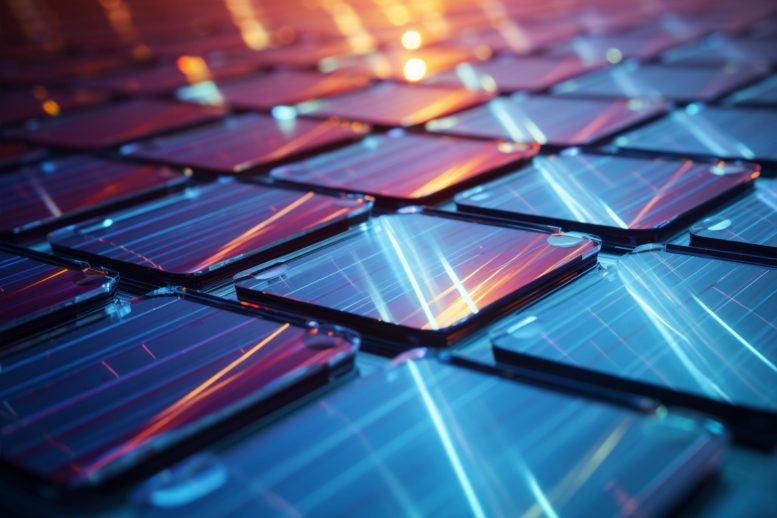
A new study has significantly increased the efficiency of thin c-Si solar cells, potentially leading to more affordable and widespread solar power adoption.
Scientists developed an innovative multilayered design to significantly boost the performance of next-generation solar cells.
Solar power has become indispensable in our global pursuit of clean energy and sustainability. Today, about 95 percent of solar cells are made using crystalline silicon (c-Si). Most commercial designs employ a c-Si photoactive layer with a thickness of around 160–170 μm. However, since silicon alone makes up nearly half the cost of each solar panel, experts believe that next-generation c-Si solar cells will be much thinner.
Unfortunately, despite a few recent improvements, the conversion efficiency of thin c-Si solar cells still lags far behind that of thick industrial ones. This problem stems from the fact that the best design strategies for thin c-Si cells only maximize individual parameters, such as short-circuit current density, open-circuit voltage, or fill factor. None of the current methods can simultaneously improve these parameters, all of which are important for realizing high efficiency.
New Research and Innovations
Against this backdrop, a research team from Hangzhou Dianzi University, China, has developed a new strategy to achieve remarkable efficiency improvements in thin c-Si solar cells. Their study, published in the Journal of Photonics for Energy (JPE), represents a significant breakthrough in the field of silicon solar cell technology.
The proposed strategy optimizes a few key optical and electrical characteristics, which the team identified to be responsible for the differences in the reported conversion efficiencies of thick and thin c-Si solar cells. Using commercial software programs, they ran optical simulations of various thin cell designs. Through further experiments using solar cells, the researchers arrived at an innovative fabrication methodology that offers several advantages over conventional techniques.
High-performance 20-μm-thin crystalline silicon (c-Si) solar cell design uses much less silicon. Figures from the report by Xie et al. include (left) a semi-finished c-Si cell on a flexible steel substrate; (middle) a complete cell; (right) image of a fabricated thin c-Si cell showing its flexibility. Credit: The Authors, doi 10.1117/1.JPE.13.035501
Instead of using the silicon ingot cutting approach typically used to manufacture thick c-Si layers, the team employed a layer transfer method. They used hydrofluoric acid to etch pores into a thick silicon wafer. This porous layer served as a substrate to grow a 20-μm-thin monocrystalline silicon layer, which could be easily detached and transferred onto a flexible stainless-steel substrate.
Enhancing Performance Through Nano-Films
To enhance the optical and electrical performance of the thin silicon layer, the researchers deposited multiple metal nanofilms on both sides using plasma-enhanced chemical vapor deposition—SiO2/SiNx/SiOx layers and Al2O3/SiNx/SiOx layers with a pyramidal texture on the sides facing the front and rear of the solar cell, respectively.
The front SiNx/SiOx and rear SiOx/SiNx layers increased the light absorption of the silicon layer in the shorter and longer wavelengths, respectively. This, in turn, enhanced the short-circuit current density—a measure of the number of charge carriers that can be generated and collected by the solar cell. Compared with a standard solar cell used as reference, the current density increased from 34.3 to 38.2 mA/cm2.
Furthermore, the SiO2 and Al2O3 layers provided high surface passivation, minimizing the recombination and loss of generated charge carriers. This led to a higher open-circuit voltage—a measure of the maximum voltage generated by a solar cell. It was boosted from 632 mV in the reference cell to 684 mV when using the proposed design. Consequently, the fill factor of the solar cell, an indicator of how close a solar cell operates to its theoretical maximum efficiency, increased from 76.2 to 80.8 percent.
As confirmed by both simulations and experiments, the proposed strategy resulted in an enhancement of conversion efficiency from 16.5 to 21.1 percent, a remarkable gain of 4.6 percent (corresponding to an approximately 28 percent improvement, compared to the reference cell). This puts the efficiency of thin c-Si solar cells close to that of their industrial thick counterparts, which today clocks in at 24 percent.
JPE Associate Editor Leonidas Palilis, Professor of Condensed Matter Physics at University of Patras, Greece, remarks, “Overall, the findings of this study present a novel way to realize high-performance thin crystalline silicon solar cells using much less silicon—for a 20-μm cell, around one-eighth of the amount required for a thick 160-μm cell on a given panel size.”
This advance will likely contribute to more widespread cost-effective adoption of silicon solar power technology, due to the reduced cost and the concomitant expansion of the solar panel manufacturing capacity.
Reference: “Investigation on significant efficiency enhancement of thin crystalline silicon solar cells” by Guanglin Xie, Zhen Zhang, Xinshuo Han, Shengjie Ma, Yue Zang, Lu Wang and Wensheng Yan, 12 September 2023, Journal of Photonics for Energy.
DOI: 10.1117/1.JPE.13.035501



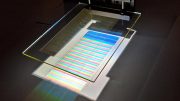
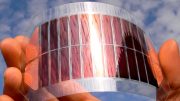

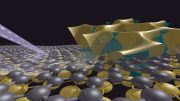
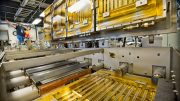
By now
Thanks for the information, we learn a lot everyday I am more interested in learning about renewable energy
we are very interested to this products please share me full details